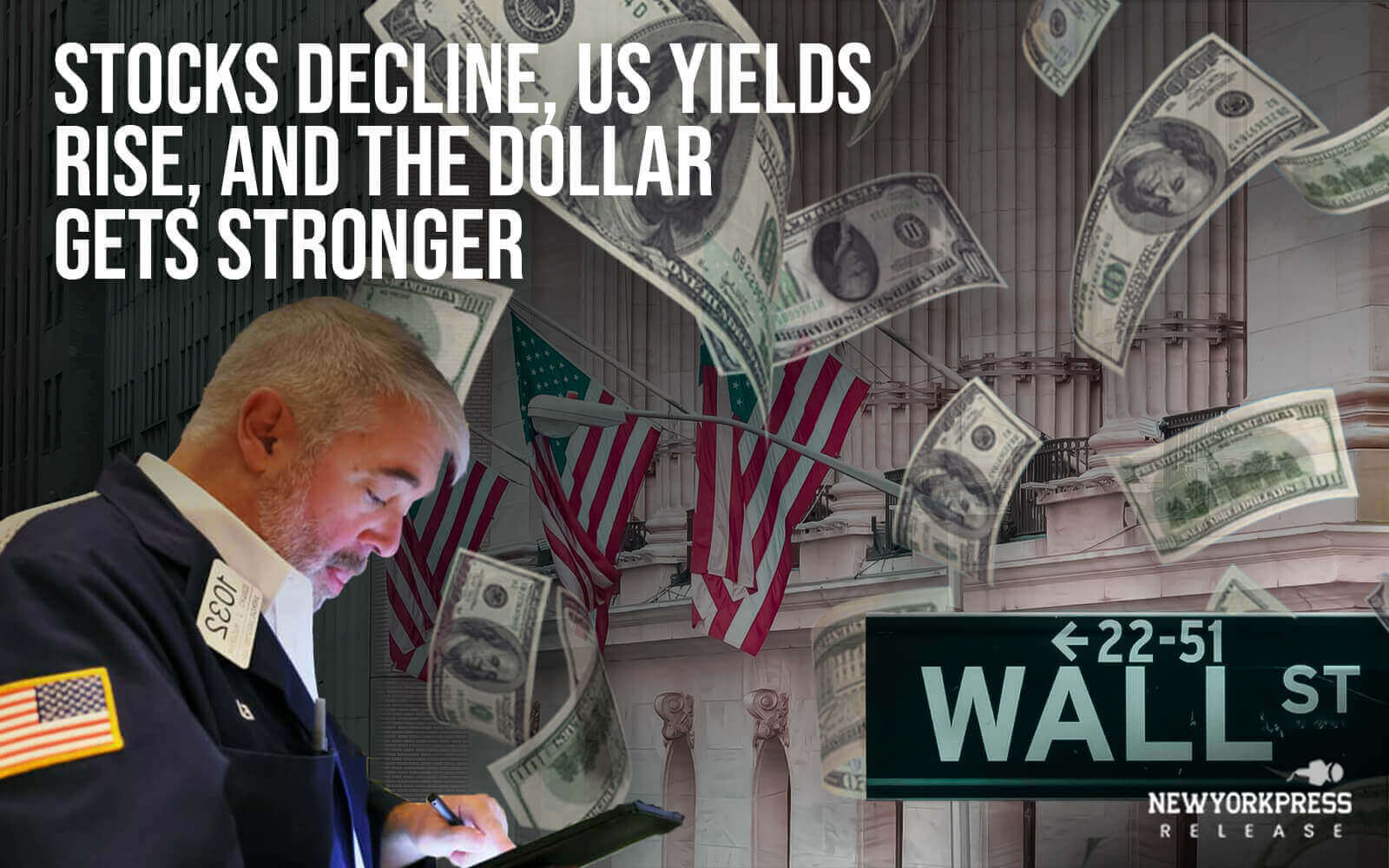Asian markets fell across the board on Thursday, following Wall Street’s lead, as investors perceived the Federal Reserve’s latest policy pronouncements as signaling higher-for-longer interest rates.
By early afternoon Hong Kong time, MSCI’s broadest index of Asia-Pacific equities outside Japan was down 0.4%. The Nikkei in Japan fell 0.6%. China’s blue-chip index fell 0.6%, while Hong Kong’s index fell 1.3%.
On Thursday morning, the yield on two-year US Treasury notes reached a 17-year high of 5.1970% before falling back to roughly 5.18% by early afternoon.
Japan’s 10-year government bond yield jumped to its highest level in a decade, matching the rise in US 10-year Treasury yields to 4.4310%, a 16-year high.
“We expect bond yields to see further upside in the very near term given the Fed’s hawkish position,” said Tai Hui, APAC chief market strategist, J.P. Morgan Asset Management.
“However, high interest rates will eventually cool the economy, leading to falling yields,” he stated. He added that they remain bullish not only on long-term government bonds or investment grade corporate debt, but also on assets such as growth and technology stocks.
The overall tone of the Fed’s recent meeting, according to Ben Luk, senior multi-asset strategist at State Street Global Markets, was not unduly aggressive, but there were two surprises.
Predictions for 2024 were somewhat higher than projected, and Fed remarks suggested that macroeconomic growth would keep up even if rates remained higher for longer, according to Luk.
The Federal Reserve of the United States held interest rates steady on Wednesday and anticipated an increase by the end of the year, saying monetary policy will probably remain much tighter than previously thought through 2024.
The median expectation for the federal funds rate by year’s end is 5.1%, up from 4.6% in June.
Even if inflation slows in the remainder of 2023 and in future years, the Fed expects only minor decreases in its policy rate.
Upward adjustments to U.S. officials’ median rate estimates for the next two years spurred a dollar rally, pushed U.S. Treasury rates to multi-year highs, flattened the yield curve, and sent equities plummeting.
The dollar index, which measures the currency against a basket of competitors, reached a high of 105.59 on Thursday, its strongest since March 9, causing the yen to approach its weakest since November.
Meanwhile, sterling fell to new multi-month lows in the aftermath of a disappointing inflation report on Wednesday, as speculation mounts about whether the Bank of England would follow its American counterpart in maintaining rates on Thursday.
Major stock futures fluctuated in the early afternoon of Asia time. The S&P 500 e-minis in the United States were down 0.3%. The Euro Stoxx 50 futures, the German DAX futures, and the FTSE futures all sank by about 1%.
Investors are also anticipating monetary policy announcements from Indonesia, the Philippines, and Taiwan on Thursday, as well as a well-balanced call from the Bank of England, which will provide guidance to Asian markets.
Oil prices dipped in Asian trade on Thursday, following the previous session’s worst drop in a month. US crude fell 0.72% to $89.01 a barrel. Brent crude has dropped to $92.87 per barrel.
Spot gold was marginally lower, trading at $1,927.96 per ounce.




